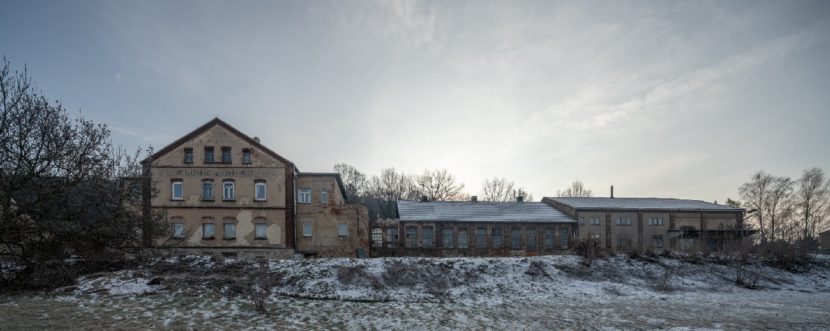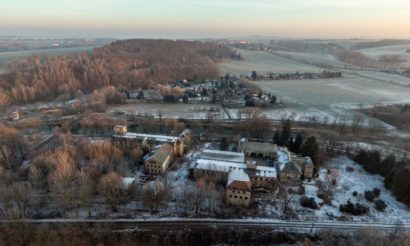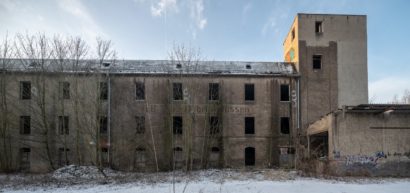Nossen Subcamp
November 1944 – April 14, 1945
![]()
The former "Ebro"-Werk in Rosswein, 2019 (Flossenbürg Concentration Camp Memorial / Photo: Rainer Viertlböck)
![]()
Aerial view of the former factory grounds in Nossen, 2019 (Flossenbürg Concentration Camp Memorial / Photo: Rainer Viertlböck)
![]()
Former furniture factory in Nossen, 2019 (Flossenbürg Concentration Camp Memorial / Photo: Rainer Viertlböck)
-
Prisoners
From the end of 1944, over 300 prisoners arrived; at the end of January, 471 prisoners were registered. A third each are Polish and from the Soviet Union; the others came from nine other countries.
-
Out of the total 650 prisoners in Nossen were 100 Jews
-
Forced labor and quarters
At first, the prisoners were quartered in the basement floors of the Klostermühle, where they were forced to produce shell cases for Warsitz (“Nowa”).
-
The prisoners were forced to build a barrack compound outside of the city, which they first moved into in February 1945. Every day some 140 men traveled under guard with the train to Rosswein, where the prisoners worked in day and night shifts for the “Ebro”-Werk, a metal foundry.
-
Guards
Detail leader Wetterau and 53 SS guards
-
Death toll
Over 100 deaths, of whom the most lives were claimed in early 1945 due to disease. The Flossenbürg camp doctor Schmitz ordered the transfer of ill prisoners to Flossenbürg after inspecting the subcamp.
-
Disbanding of the camp / end of the war
On April 14, 1945, the subcamp was evacuated. The prisoners were brought partly by foot and partly by train to Leitmeritz.
-
Commemoration
A commemorative stone in the Nossen Cemetery and a monumental Soviet memorial in the Nossen City Park memorialize those who died in the subcamp.
-
A memorial stone in Rosswein does not expressly mention the work detail.


